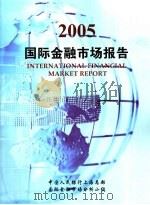《国际金融市场 英文版》
| 作者 | (美)理查德 M.列维奇(Richard M.Levich) 编者 |
|---|---|
| 出版 | 北京:机械工业出版社 |
| 参考页数 | 670 |
| 出版时间 | 1998(求助前请核对) 目录预览 |
| ISBN号 | 7111064275 — 求助条款 |
| PDF编号 | 89071328(仅供预览,未存储实际文件) |
| 求助格式 | 扫描PDF(若分多册发行,每次仅能受理1册) |

PART Ⅰ INTRODUCTION AND OVERVIEW2
1 Introduction to the Study of International Financial Markets2
1 Introduction to the Study of International Financial Markets2
PART Ⅰ INTRODUCTION AND OVERVIEW2
The Changing Financial Landscape3
The Expanding Menu of Financial Choices4
Greater Volatility as a Feature of Financial Markets5
Box 1.1:Accidents along the International Financial Superhighway6
Increased Competition within and among Financial Markets6
Major Themes8
Prices in International Financial Markets8
Policy Issues in International Financial Markets10
Box 1.2: London,Tokyo Said Crucial to Market in U.S.Treasurys13
Box 1.3: Germany Will Issue Short-Term Bills,Sign of Pressure from Euro-Currency14
Challenges in the Study of International Financial Markets and the Practice of International Financial Management14
The Importance of Foreign Exchange in the United States15
The Importance of Foreign Exchange outside the United States15
The Study of International Financial Markets:More Demanding18
The Practice of International Financial Management:More Demanding18
A Road Map for the Remainder of the Book18
Summary of Major Topics18
Typical Chapter Outline20
2 An Overview of International Monetary Systems and Recent Developments in International Financial Markets21
2 An Overview of International Monetary Systems and International Financial Markets21
International Monetary Arrangements in Theory and Practice22
The International Gold Standard,1879-191324
Box 2.1:Rules of the Game:The International Gold Standard,1879-191324
The Spirit of the Bretton Woods Agreement,194526
Box 2.2:Rules of the Game:The Spirit of the Bretton Woods Agreement in 194527
The Fixed-Rate Dollar Standard,1950-197028
Box 2.3:Rules of the Game:The Fixed-Rate Dollar Standard,1950-197029
The Floating-Rate Dollar Standard,1973-198432
The Plaza-Louvre Intervention Accords and the Floating-Rate Dollar Standard,1985-199633
Box 2.4:Rules of the Game:The Floating-Rate Dollar Standard,1973-198433
Box 2.5:Rules of the Game:The Plaza-Louvre Intervention Accords and the Floating-Rate Dollar Standard,1985-199635
The Spirit of the European Monetary System,197935
Box 2.6:Rules of the Game:The Spirit of the European Monetary System,197938
The European Monetary System as aGreater DM Area,1979-199238
Exchange Rate Developments39
Recent Behavior of Prices in International Financial Markets39
Box 2.7:Rules of the Game:The European Monetary System as a Greater DM Area,1979-199239
Box 2.8:A Primer on Foreign Exchange Market Math and Terminology41
Interest Rate Developments49
Summary of Recent Developments56
Policy Matters-Private Enterprises57
The Conduct of Business under Pegged and Floating Exchange Rates57
Greater Exchange Rate Variability under Floating57
Costs of Exchange Rate Variability57
Policy Matters-Public Policymakers58
Exchange Rate Policies in Emerging Markets58
Problems in the European Monetary System60
Summary62
PART Ⅱ FOREIGN EXCHANGE MARKETS66
3 Market Structure and Institutions66
PART Ⅱ FOREIGN EXCHANGE MARKETS66
3 Market Structure and Institutions66
Importance of Foreign Exchange Market Trading67
Origins of the Market67
Volume of Foreign Exchange Trading68
Foreign Exchange Trading Profits69
Explaining the Profitability of Foreign Exchange Trading71
Box 3:1:How to Succeed at Intervention by Really Signaling73
Foreign Exchange Market Products and Activities73
Spot and Forward Contracts73
Foreign Exchange Swaps74
Types of Trading Activities:Speculation and Arbitrage75
The Relationship between Spot and Forward Contracts77
Box 3:2:Example of Reuters Screen Page,Citibank Long-Dated Forward Rates February 22,198580
The Foreign Exchange Market Setting83
Comparing the Foreign Exchange Market with Other Markets83
Tracking a Foreign Exchange Transaction84
Corporate Foreign Exchange Trading88
Access to the Interbank Foreign Exchange Market88
Trends Toward Automated Brokerage,Trading,Clearing,and Settlement89
Policy Matters-Private Enterprises90
A Close-Up View on Foreign Exchange Trading90
Controls over Foreign Exchange Trading91
Valuing Foreign Exchange Trading Profits93
Policy Matters-Public Policymakers93
Summary94
4 International Parity Conditions:Purchasing Power Parity98
4 International Parity Conditions:Purchasing Power Parity98
An Overview of International Parity Conditions in a Perfect Capital Market99
The Usefulness of Parity Conditions in International Financial Markets99
Purchasing Power Parity in a Perfect Capital Market101
The Law of One Price101
Absolute Purchasing Power Parity102
Relative Purchasing Power Parity102
Box 4.1:Absolute PPP Comparisons with Alternative Market Baskets and Alternative Inflation Scenarios104
The Real Exchange Rate and Pruchasing Power Parity105
Relaxing the Perfect Capital Market Assumptions107
Transaction Costs107
Uncertainty108
Taxes108
Empirical Evidence on Prices and Exchange Rates109
Empirical Methods,or How to Test a Parity Condition109
Evidence on the Law of One Price110
Relative PPP:Evidence on Recent Quarterly Data110
Relative PPP:Evidence from Hyperinflationary Economies114
Relative PPP:Evidence from Long-Run Data115
The Role of Parity Conditions for Management Decisions117
Empirical Tests of PPP:The Final Word117
Policy Matters—Private Enterprises117
Purchasing Power Parity and Managerial Decisions118
Purchasing Power Parity and Product Pricing Decisions118
Box 4:2:Gray Markets and the Law of One Price119
Policy Matters—Public Policymakers122
Summary123
Appendix4.1:PPP,Continuous Compounding and Logarithmic Returns124
5 International Parity Conditions:Interest Rate Parity and the Fisher Parities127
5 International Parity Conditions:Interest Rate Parity and the Fisher Parities127
Interest Rate Parity:The Relationship between Interest Rates,Spot Rates,and Forward Rates128
The Usefulness of the Parity Conditions in International Financial Markets:A Reprise128
Interest Rate Parity in a Perfect Capital Market129
Relaxing the Perfect Capital Market Assumptions133
Empirical Evidence on Interest Rate Parity136
The Fisher Parities140
The Fisher Effect140
The International Fisher Effect141
Box 5:1:Deviations from Uncovered Interest Parity,or How Exchange Rate Changes Can Substantially Raise(or Lower)the Cost(or Return)on Your Funds142
Relaxing the Perfect Capital Market Assumptions144
Empirical Evidence on the International Fisher Effect145
The Forward Rate Unbiased Condition148
Interpreting a Forward Rate Bias148
Empirical Evidence on the Forward Rate Unbiased Condition148
Tests Using the Level of Spot and Forward Exchange Rates149
Tests Using Forward Premiums and Exchange Rate Changes149
Policy Matters—Private Enterprises153
Application 1:Interest Rate Parity and One-Way Arbitrage153
Application 2:Credit Risk and Forward Contracts—To Buy or to Make?155
Box 5:2:An Example of One-Way Arbitrage Profits When There Are No Round-Trip Arbitrage Profits155
Application 4:Are Deviations from the International Fisher Effect Predictable?156
Application 3:Interest Rate Parity and the Country Risk Premium156
Application 5:Are Deviations from the International Fisher Effect Excessive?157
Application 6:International Fisher Effect and Diversification Possibilities158
Application 7:International Fisher Effect,Long-Term Bonds,and Exchange Rate Predictions158
Policy Matters—Public Policymakers160
Summary161
Appendix 5.1:Interest Rate Parity,the Fisher Parities,Continuous Compounding,and Logarithmic Returns162
Appendix 5.2:Transaction Costs and the Neutral Band Surrounding the Traditional Interest Rate Parity Line163
6 Spot Exchange Rate Determination167
6 Spot Exchange Rate Determination167
News and Foreign Exchange Rates:An Introduction168
Box 6.1:The Reaction of the Spot Exchange Rate to News Announcements on Macroeconomic and Political Events170
Exchange Rates and News Stories:Three Illustrations170
News and Foreign Exchange Rates:A Summary175
Box 6.2:Foreign Exchange Rate Behavior:Major Concepts176
An Overview of the Flow Approach177
An Overview of the Stock Approach177
Flow versus Stock Models of the Exchange Rate177
Combining Flow and Stock Concepts of the Exchange Rate179
Asset Models of the Spot Exchange Rate180
The Monetary Approach181
The Portfolio Balance Approach186
Empirical Evidence of Exchange Rate Models188
In-Sample Results189
Postsample Results194
The Role of News196
Policy Matters—Private Enterprises199
Policy Matters—Public Policymakers200
Summary202
Appendix 6.1 The Implications of Flow and Stock Equilibrium on the Foreign Exchange Rate203
Appendix 6.2 Demonstration That the Present Exchange Rate Reflects All Future Exogenous Macroeconomic Values207
Appendix 6.3 The Monetary Model of Exchange Rate Determination with Traded and Nontraded Goods208
7 Foreign Exchange Market Efficiency211
7 Foreign Exchange Market Efficiency211
Theory of Market Efficiency213
Defining the Equilibrium Benchmark213
Pictures of Efficient Markets214
Interpreting Efficient Market Studies215
Box 7.1:Exchange Rate Levels and Changes Generated Using the Random-Walk(No Drift)Model216
Defining the Available Information Set217
Extensions of Efficient Market Theory219
Empirical Evidence on Exchange Market Efficiency220
Market Efficiency with Certainty and Risk-Free Investment221
Market Efficiency with Uncertainty and Risky Investment222
Box 7.2:Tracking Positions and Profits in a Technical Trading Rule:A Numerical Example225
Policy Matters—Private Enterprises236
Policy Matters—Public Policymakers237
Summary240
8 Exchange Rate Forecasting243
8 Exchange Rate Forecasting243
The Forecasting Approach and the Market Setting245
Resolving Controversies in Exchange Rate Forecasting245
Forecast Performance Evaluation:Accurate versus Useful Forecasts253
Box 8.1:The Difference between Forecasting a Random Walk and an“Almost Random”Walk254
Box 8.2:Evaluating a Forecasting Track Record Using the Percentage Correct Method258
Assessing the Economic Value of Currency Forecasts258
Forecasting Methods:Some Specific Examples260
Short-Run Forecasts:Trends versus Random Walk260
Long-Run Forecasts:Reversion to the Mean?264
Composite Forecasts:Theory and Examples265
Policy Issues and Special Forecasting Problems268
“Consumers”of Exchange Rate Forecasts268
“Producers”of Exchange Rate Forecasts269
Special Problems in Exchange Rate Forecasting269
Summary271
9 The Eurocurrency Market276
PART Ⅲ OFFSHORE FINANCIAL MARKETS276
PART Ⅲ OFFSHORE FINANCIAL MARKETS276
9 The Eurocurrency Market276
The Origins of Supply and Demand for Offshore Banking278
Historical Overview278
Onshore Banking Regulations Boost the Offshore Market279
The Offshore Markets Endure280
Box 9.1:Creating Eurodollars280
Growth of the Eurocurrency Market282
Pricing of Eurocurrency Deposits and Loans284
Pricing in the Case of One Currency and Two Financial Centers285
Box 9.2:Costs of Collecting Deposits and Servicing Loans286
Can Offshore and Onshore Markets Coexist?287
The Impact of Capital Controls and Taxes289
Market Share and Pricing in Competing Offshore Centers291
The General Case with Many Currencies and Many Financial Centers292
Policy Matters—Private Enterprises293
Concems of Depositors293
Box 9.3:Risk in Cross-Border Transactions:The Wells Fargo-Citibank Case296
Concems of Borrowers297
Policy Matters—Public Policymakers299
Offshore Markets and Macroeconomic Stability300
Could the Offshore Markets Expand Indefinitely?301
Approaches to Regulating Offshore Markets302
Box 9.4:Japanese Banking Woes:The Daiwa Banking Scandal and the“Japan Premium”303
Competing for Markets:U.S.Policy Initiatives304
Offshore Markets:European Policy Concerns307
Summary308
10 The Eurobond Market311
10 The Eurobond Market311
Historical Overview and Dimensions of the Eurobond Market312
A First Stimulus to the Eurobond Market:The IET313
A Second Round of Stimulus to the Eurobond Market313
The Eurobond Market Endures313
Regulatory and Institutional Characteristics of the Market317
Regulatory Bodies and Disclosure Practices317
Queuing,Currency of Denomination,and Speed of Offering319
Issuing Costs,Ratings,and Exchange Listings319
Summing Up:The Pros and Cons of Onshore and Offshore Markets320
Issuing Practices and Competitive Conditions in the Eurobond Market321
A Brief Sketch of Eurobond Underwriting322
Tensions and Incentives within a Eurobond Syndicate323
Box 10.1:“Excessive Competition”in the Eurobond Market324
The Gray Market326
Box 10.2:Examples of Gray Market Prices in the Eurobond Market327
Evidence of Competition among Eurobond Lead Managers327
Another Innovation:Global Bonds331
Pricing Eurobonds331
Eurobonds and Secrecy332
Market Segmentation and the Pricing of Eurobonds332
Eurodollar Bond Prices:Some Examples333
Onshore-Offshore Arbitrage Opportunities334
Eurodollar Bond Prices:A General Model336
Policy Matters—Private Enterprises337
Onshore-Offshore Arbitrage Once Again:Exxon Capital Corporation338
Using the Eurobond Market to Enhance the Value of the Firm339
Box 10.3:Recent Cases of Scarcity Value in the Eurobond Market341
Policy Matters—Public Policymakers341
The U.S.Competitive Response341
European Union and the Eurobond Market343
Summary346
PART Ⅳ DERIVATIVE SECURITY MARKETS:FUTURES,OPTIONS,AND SWAPS350
11 Currency and Interest Rate Futures350
PART Ⅳ DERIVATIVE SECURITY MARKETS:FUTURES,OPTIONS,AND SWAPS350
11 Currency and Interest Rate Futures350
Distinctions between Futures and Forwards:Institutions and Terminology352
Dispersed versus Centralized Trading353
Customized versus Standardized Transactions353
Variable Counterparty Risks versus the Clearinghouse354
Cash Settlement and Delivery versus Marking-to-Market Convention355
Box 11.1:Rogue Trading Sinks Baring Brothers—But Not the Futures Market356
Description of Futures Contracts359
Contract Specifications361
Payoff Profiles for Futures and Forward Contracts366
Box 11.2:Hedging the Interest Rate Risk in Planned Investment and Planned Borrowing370
Futures Pricing and Forward Pricing372
Forward Pricing and the Cost-of-Carry Model372
Futures Pricing and the Marking-to-Market Convention373
The Term Structure of Forward Rates374
A Risk Premium in Forwards?377
Policy Matters—Private Enterprises379
Deciding on Futures versus Forwards379
New Futures Contracts and Trading Arrangements380
Policy Matters—Public Policymakers382
Futures Prices and Cash Market Volatility382
Transaction Costs and Transaction Taxes383
Summary384
Appendix 11.1 Synthetic Interest Rate Futures386
12 Currency and Interest Rate Options391
12 Currency and Interest Rate Options391
First Principles:Terminology and Institutions393
Types of Contracts393
Location of Trading395
Contract Specifications397
Option Pricing:An Introduction403
Spot Currency Options:Prices at Maturity403
Interest Rate Futures Options:Prices at Maturity406
Option Prices Prior to Maturity406
Box 12.1:Practical Applications of Currency and Interest Rate Options408
Option Pricing:Formal Models413
Pricing Spot Currency Options414
Pricing Currency and Interest Rate Futures Options423
Box 12.2:A Link between Put Prices,Call Prices,and Market Sentiment424
Empirical Evidence on Option Prices426
Arbitrage Boundary Conditions426
Pricing Efficiency and Pricing Biases426
Policy Matters—Private Enterprises428
Can Option Pricing and Trading Be Made an Exact Science?428
Is Volatility Constant or Does Volatility Vary?431
Other Shortcomings of Option Pricing Models433
Box 12.3:What Does Implied Volatility Predict?434
Policy Matters—Public Policymakers435
Options Markets and Price Volatility in Underlying Markets435
Capital Requirements for Option Traders435
Summary436
Appendix 12.1 Determination of the Replicating Portfolio in the Two-Period Binomial Model437
Appendix 12.2 Boundary Conditions,Early Exercise,and Option Prices438
Appendix 12.3 Introduction to Exotic Options440
13 Currency and Interest Rate Swaps446
13 Currency and Interest Rate Swaps446
The Role of Capital Controls447
Origins and Underpinnings of the Swap Market447
Factors Favoring the Rise of Swaps449
Swaps Outstanding,the Volume of Transactions,and Gross Exposure449
The Basic Cash Flows of a Swap Transaction452
Currency Swap452
Interest Rate Swap454
Box 13.1:A Summary of the IBM/World Bank Currency Swap455
Box 13.2:Comparing Genuine Fixed-Rate and Synthetic Fixed-Rate Financing:A Detailed Example458
Risks in Swaps460
Swap Risks for the Hedger460
Swap Risks for the Speculator460
Box 13.3:Interest Rate Volatility and the Potential for Gain and Loss in an Interest Rate Swap Contract462
Measuring the Risks of Swaps463
Using Simulation to Estimate the Risks of Swaps464
The Pricing of Swaps468
Price Quoting Conventions in the Swap Market469
The Fundamental Determinants of Swap Prices471
Policy Matters—Private Enterprises472
Applications of Swaps:Capturing Arbitrage Opportunities,Reducing Risks,Enhancing Sales472
Pricing Interest Rate Swaps:The Source of Gains473
Applications of Swaps:Magnifying Risk and Return474
Formation of AAA-Rated Subsidiaries476
Policy Matters—Public Policymakers476
A Large-Scale Default Hits the Swap Market476
BIS Capital Requirements for Swap Transactions477
Netting Agreements and the Risk Exposure of Swap Transactions478
Summary480
Appendix 13.1 Valuing the Cash Flows in an Interest Rate Swap481
PART Ⅴ INTERNATIONAL ASSET PORTFOUOS488
14 Bond Portfolios488
PART Ⅴ INTERNATIONAL ASSET PORTFOUOS488
14 Bond Portfolios488
Dimensions of National Bond Markets492
Bonds Outstanding by Market Location492
Bonds Outstanding by Market Segment493
Return and Risk in National Bond Markets494
Calculating Unhedged Returns in USS Terms495
Calculating Currency-Hedged Returns in USS Terns496
Box 14.1:Calculation of Prices and Returns for a Five-Year German Bund on an Unhedged Investment498
Empirical Evidence on Return and Risk in Global Bond Markets499
Box 14.2:Calculation of Prices and Returns for a Five-Year German Bund on a Currency-Hedged Investment500
Returns on Unhedged Bonds501
Returns on Currency-Hedged Bonds501
The Efficient Frontier and Gains to International Bond Portfolios503
Policy Matters—Private Investors and Institutions504
Currency-Hedged Bonds:Is There a Free Lunch?504
Active versus Passive Currency-Hedging Strategies506
Problems in Implementing an International Bond Portfolio511
Box 14.3:Have Global Bond Funds Delivered?512
Box 14.4:To Hedge or Not To Hedge—A Global Bond Portfolio514
Policy Matters—Public Policymakers515
The Transition to European Monetary Union515
Brady Bonds and Emerging Market Debt Issues515
Summary517
Appendix 14.1 Global Asset Allocation518
15 Equity Portfolios522
15 Equity Portfolios522
Size and Institutional Features of Global Equity Markets525
Market Capitalization Measures525
Institutional Aspects of Global Equity Markets526
Box 15.1:How Large Is the Japanese Stock Market?527
International Investment Vehicles531
Direct Purchase of Foreign Shares531
American Depositary Receipts531
Box 15.2:The Russian(ADRs)Are Coming...The Russian(ADRs)Are Coming!533
Closed-End and Open-End Mutual Funds534
Box 15.3:ADRs:US$ Securities with Substantial Foreign Exchange Risk535
Risk and Return in International Equity Markets538
Calculating the Unhedged Returns on Foreign Equity in US$ Terms538
Portfolio Risk in Domestic and International Stocks540
Pricing Determinants544
Empirical Evidence on Pricing547
Policy Matters—Private Investors550
Factors Favoring Overweighting Foreign Markets in Portfolios551
Factors Favoring Overweighting Home Markets in Portfolios551
Is Investment in MNCs a Close Substitute for International Investment?552
Can Investors Count on International Diversification Gains in the Future?553
Are Emerging Markets Integrated with World Capital Markets?554
Policy Matters—Public Policymakers556
Equity Market Trading Arrangements556
Diversity in Accounting Principles and Disclosure Practices558
Summary560
PART Ⅵ INTERNATIONAL ASSET PORTFOUOS AND FINANCIAL RISK MANAGEMENT566
16 Measuring and Managing the Risk in International Financial Positions566
PART Ⅵ INTERNATIONAL ASSET PORTFOUOS AND FINANCIAL RISK MANAGEMENT566
16 Measuring and Managing the Risk in International Financial Positions566
The Market Value of the Firm and Channels of Risk568
The Corporate Treasurer s Financial Risk Management Problem568
Accounting Measures of Foreign Exchange Exposure572
Exposure of the Balance Sheet:Translation Exposure573
Exposure of the Income Statement:Transaction Exposure575
U.S.Accounting Conventions:Reporting Accounting Gains and Losses575
Economic Logic of Accounting Conventions577
Economic Measures of Foreign Exchange Exposure578
The Regression Approach:The Basic Model578
The Regression Approach:An Application579
The Regression Approach:Three Extensions581
The Scenario Approach581
The Scenario Approach:Some Extensions583
Empirical Evidence on Firm Profits,Share Prices,and Exchange Rates585
Arguments for Hedging Risks at the Corporate Level586
PART Ⅶ REGULATORY ISSUES608
17 Giving Direction to International Financial Markets:Regulation and Intervention in the Competitive Marketplace608
1998《国际金融市场 英文版》由于是年代较久的资料都绝版了,几乎不可能购买到实物。如果大家为了学习确实需要,可向博主求助其电子版PDF文件(由(美)理查德 M.列维奇(Richard M.Levich) 1998 北京:机械工业出版社 出版的版本) 。对合法合规的求助,我会当即受理并将下载地址发送给你。
高度相关资料
-

- 国际金融学 英文版
- 1998 沈阳:东北财经大学出版社
-

- 国际金融市场(第三版)
- 1998
-

- 国际金融市场TOKYO
- 1988年06月第1版 有斐阁
-

- 国际金融·资本市场
- 1988年12月第1版 有斐阁
-

- 2005 国际金融市场报告
- 中国人民银行上海总部;国际金融市场分析小组
-

- 主要国际金融市场
- 1984 五南图书出版公司
-

- 国际金融市场
- 1992 北京:中国金融出版社
-

- 香港国际金融市场
- 1983 巨浪出版社
-

- 国际金融 英文版·第3版
- 1999 北京:机械工业出版社
-

- 国际金融实务 英文版
- 1997 上海:上海交通大学出版社
-

- 国际金融 管理·市场·机构 英文版
- 1998 北京:清华大学出版社
-

- 金融市场与国际信贷
- 1988 上海:上海社会科学院出版社
-

- 国际金融市场
- 1999 上海:上海外语教育出版社
-

- 国际金融市场 国际资本市场
- 1998 北京:商务印书馆
提示:百度云已更名为百度网盘(百度盘),天翼云盘、微盘下载地址……暂未提供。➥ PDF文字可复制化或转WORD
